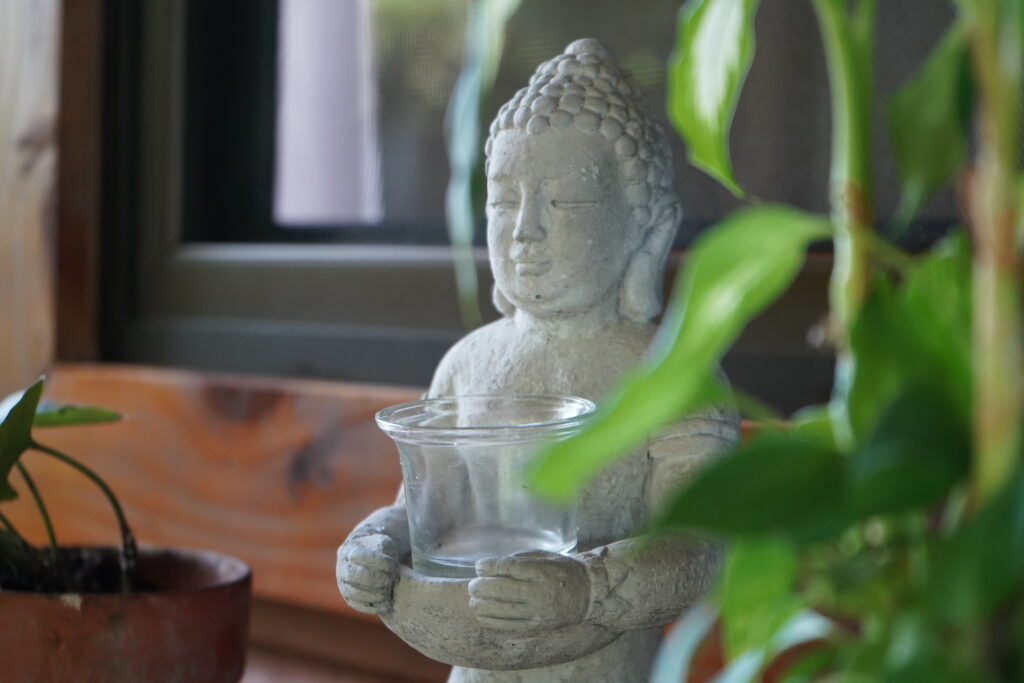The Yamas — moral principles
The Yamas are the first limb in the eight-fold path of yoga, a holistic view of what it means to be a true “yogi.” Simply performing some postures doesn’t create radical change in the practitioner. We need to take it a step further.
BODHI SURF + YOGA ONLINE IMMERSION PROGRAM
The first two limbs are important for viewing and understanding life as a Yogi. True yoga is reflecting and acting on insights about the nature and meaning of life. It teaches us how to be happy. It teaches us to act according to a higher nature.
To practice Yoga means acting in a way that benefits yourself and others. The Yamas help us cultivate a mentality of restraint. They are guidelines for how we should interact with the world. The five principles are non-harming, truthfulness, non-stealing, non-excess, and non-attachment.
“On the wooden board outside of the meditation hall in Zen monasteries, there is a four-line inscription. The last line is, “Don’t waste your life.” Our life is made of days and hours, and each hour is precious.” — Thich Nhat Hanh
Ahimsa (Non-Harming)
In “The Yoga Sutras,” Patanjali explains that the Ego is partly to blame for our suffering. When we get caught up in our uniqueness, we believe that the entire universe revolves around us. We lose our sense of connection to something more significant, and we forget that we are part of Mother Nature. It becomes difficult to prevent harming others when this connection is lost.

To practice non-harming, we must create a sense of belonging, which starts with an attitude of kindness toward ourselves and others. Then, we can begin to approach all living beings with compassion.
When we examine our consumption habits, we begin to minimize what we take to honor the balance of nature. We look at where our purchases come from and reflect on their true cost. Finally, we may become more mindful of our diets and how they impact other living beings.
We must also be mindful when speaking. Gossiping, judging, and criticizing are acts of verbal violence that cause harm to others. How we speak to ourselves also requires Ahimsa. Self-judgement and self-criticism are violent. We should practice kindness and generosity toward ourselves as well.
“Happiness is a function of compassion. If you do not have compassion in your heart, you do not have happiness.” — Thich Nhat Hahn

Satya (Truthfulness)
The second Yama is connected to the first because it means learning to speak and act compassionately. Truthfulness means “not lying” but communicating with respect and integrity.
The Sanskrit word “Viveka” means discernment. We can use this to develop an awareness of where our thoughts and judgments are coming from. We may begin to see our thoughts as the habit-energy of our ancestors or that they are based on wrong perceptions. Before we speak, we must ask ourselves, “Is my perception accurate?”
Practicing Satya means recognizing that we don’t always need to express everything we think. Looking for the right moment and way to express something shows love and respect toward others.
The intention behind our words is as important as telling the truth. We must examine where our urges to speak are coming from. Are we speaking to hurt or help someone? In this practice, we avoid gossip, criticism, and passive-aggressiveness. Satya is about becoming a trustworthy person who speaks with integrity.
“Before you speak, ask yourself: Is it kind, is it necessary, is it true, does it improve the silence?” — Shirdi Sai Baba

Asteya (Non-stealing)
Asteya simply means not taking what does not belong to you. This includes not only taking possessions but also ideas, time, and energy.
The desire to steal comes from ignorance, greed, and attachment. According to yoga philosophy, subtle ways of stealing should be avoided. Manipulating others is stealing since you rob them of their time and energy.
Interrupting a conversation is stealing. Hoarding behavior is stealing.
We must not only avoid stealing from people but from the Earth as well. The Earth offers us flowers and fruit, trees and birds, animals, and all the other living beings. We must be there for them and refuse to take more than necessary.
When we unconsciously over-consume nature’s resources, we are not only stealing in the present but also from future generations. Therefore, sustainable development can be understood as a means of practicing Asteya.
Sustainability at a Surf + Yoga Camp in Costa Rica in 2022
Practicing Asteya makes you the richest person in the world because you always feel you have enough.

Brahmacharya (Non-excess)
The fourth virtue is moderation. Brahmacharya invites us to honor the sanctity of life by controlling the flow of energy that comes in and out of our bodies. Our energy, or life-force “prana,” is valuable, and we should not waste it.
Over-indulgence is called “forgetfulness” or the opposite of mindfulness. It is when we are lost in our worries, fears, anger, and regrets. It is when we are lost in the past or the future. In this state, we overindulge in sex, alcohol, shopping, social media, or work.
When we live in forgetfulness, we are listening to false narratives that force us to seek pleasure instead of listening to our bodies. In this state, we develop bad habits and cultivate addictions.
Brahmacharya means learning how to enjoy the pleasures of life without becoming attached, addicted, or obsessed. Non-excess allows us to restore our creative energy, which helps us to bring about clarity and peace of mind.
Practicing Brahmacharya means our vital life energy is used to bring us closer to God instead of away from it. Non-excess restores our creative energy and allows clarity and peace of mind. It helps us stay on the noble path.
“Your mindful breath and your smile will bring happiness to you and to those around you. Even if you spend a lot of money on gifts for everyone in your family, nothing you could buy them can give as much true happiness as your gift of awareness, breathing, and smiling, and these precious gifts cost nothing.” — Thich Nhat Hahn

Aparigraha (Non-attachment)
The principle of non-attachment is about enjoying the blessings in our lives while maintaining the ability to let them go when the time comes. Aparigraha is about letting go of physical things and ideas, concepts, and expectations that may hold us back. It means accepting that the good things in our lives will someday disappear.
Practicing Aparigraha means acknowledging everything is impermanent. It allows us to be grateful for the things we have, knowing one day they will be gone. This appreciation for the nature of life gives us a sense of freedom because we are not clinging to people or ideas.
If we rely on other people or objects to make us happy, we suffer greatly when they are gone. Losing things then causes anxiety and a feeling of being lost without them. Instead of hoarding money, possessions, beauty, and youth, Aparigraha teaches us to let them go gracefully. When you see the impermanence of things, you handle change with ease.
The more you learn to let go, the more you will acquire confidence and contentment. Without impermanence, life could not continue. For this reason, we should cherish the present moment so dearly. When we understand the nature of impermanence, we can stay calm and content in the face of uncertainty.
To practice Aparigraha, we can repeat this mantra, “I am happy in the present moment. I do not ask for anything else. I do not expect additional happiness or conditions to bring about more happiness.”
Resources
Jakubowicz, Rina. The Yoga Mind: 52 Essential Principles of Yoga Philosophy to Deepen Your Practice. Rockridge Press. Kindle Edition.
Thron, Raji. Mastering Vinyasa Yoga: The Yoga Synthesis Guide to Dynamic Sequencing with Hundreds of Photos and Instructions. Yoga Synthesis. Kindle Edition.
Freeman, Richard; Taylor, Mary. The Art of Vinyasa. Shambhala. Kindle Edition.
“The Yoga Sutras of Patanjali” Rutgers University
Deborah Adele, “Yamas & Niyamas: Exploring Yoga’s Ethical Practice”
“Your True Home,” by Thich Nhat Hanh. Shambhala Publications, Inc. 2011

Your Journey Starts Here
Ready to Finally Experience That Life-Changing Surf + Yoga Trip (Without the Overwhelm)?
Bust the 5 biggest myths about going to a surf and yoga camp so you can stop procrastinating and start catching waves - with our FREE 5-day email course.
Change the heading on the Separator tab ->
Search
Get a Toolkit to Create Calm in Your Inbox
Watch the first lesson from our full immersive course: 8 Limbs of Ashtanga Yoga, FREE!
Change the heading on the Separator tab ->
Most Read Blogs
What is the Meaning of Anjali Mudra?
May 27, 2020
Fitness for Surfers: Workouts, Exercises & Training
February 10, 2022
The Best Places to Eat in Uvita, Costa Rica
May 19, 2022
How to Get From SJO to Costa Ballena, Costa Rica
May 31, 2018
Change the heading on the Separator tab ->
Categories
Categories
- Bodysurfing (5)
- Food (7)
- Responsible Business (6)
- Surfing (65)
- Travel (65)
- Yoga (42)
Change the heading on the Separator tab ->
Newsletter
Thanks for subscribing! Please check your email for further instructions.
Change the heading on the Separator tab ->
Follow Us
Carly Stoenner
Change the heading on the Separator tab ->
Read more
Agni – Ayurveda’s Most Vital and Dynamic Principle
Words by Pilar
What if we told you that you could change your life by reading just one blog post? While that might be a bit far fetched, we’re convinced that we could all benefit…
5 Advanced PNF Stretches for Surfing
Words by Guest Post
Like in any sport, surfing requires exceptional mobility and range of motion in the joints. Stretching is a great tool to gain mobility for those eye-catching maneuvers or a post-session recovery routine….
A Typical Day: Bodhi Sessions 7 Day Surf + Yoga Camp
Words by George Frost
If you’re looking for a surfing and yoga experience that inspires, educates, and empowers – look no further! Our Bodhi Sessions 7 Day Surf + Yoga Camp is designed to help you…



